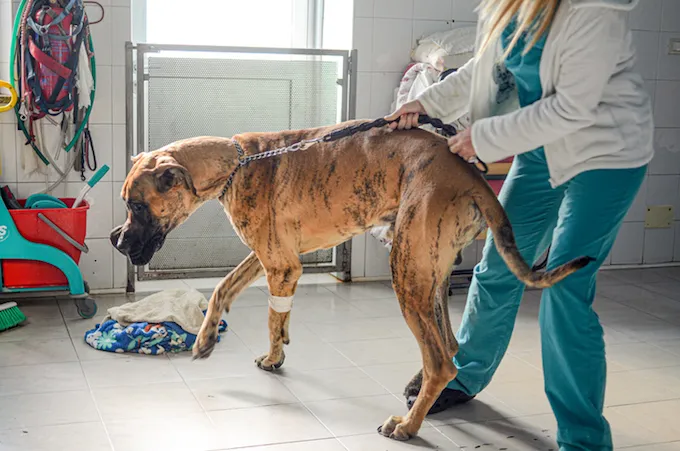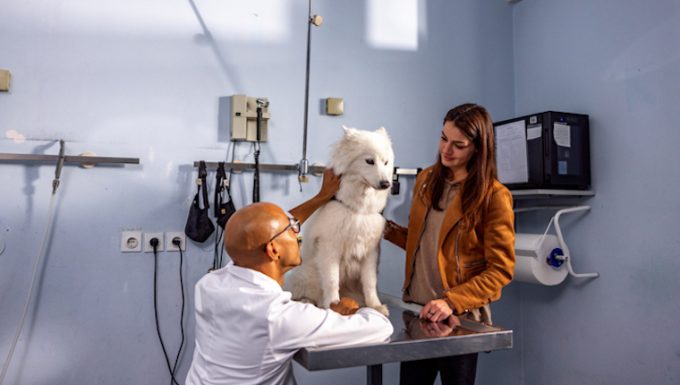Panosteitis in dogs is a medical condition that affects a dog’s long leg bones. The condition can cause pain and limping.
Fortunately, the condition usually resolves itself over time. Although larger breeds of dogs are unfortunately more predisposed to the condition.
Sometimes, the condition is also called growing pains in dogs.
If you see the signs of the condition in your dog, then get to a veterinarian for a proper diagnosis and treatment.
Here’s what you should know about the symptoms, causes, and treatments for the condition.
Symptoms of Panosteitis in Dogs
The condition produces a number of symptoms. For example, some of the most common symptoms include:
- Limping
- Pain
- Acting lethargic
- Avoiding exercise
- Fever
- Loss of appetite
Causes of Panosteitis in Dogs

The cause of the condition can be a number of things. For instance, some of the most common causes include:
- Growth spurt
- High protein diet
- Infections
- Autoimmune issues
- Lesions
- Stress
Additionally, certain larger breeds of dog seem to develop the condition more often than usual. For example, some of those breeds include:
- Great Dane
- Labrador Retriever
- Scottish Terrier
- Irish Setter
- German Shepherd
- Doberman Pinscher
- Samoyed
- Airedale
- Golden Retriever
Also, dogs under the age of two appear to develop the condition much more frequently than older dogs.
Treatments for Panosteitis in Dogs
Firstly, your vet will ask about your dog’s symptoms. Secondly, your vet will ask about your dog’s full medical history. This will include breed-specific problems.
Thirdly, your vet will carry out a full physical examination. Your vet will pay special attention to how your dog walks and moves. Also, your dog’s joints will be examined.
Additionally, X-rays of the affected area can help to confirm the condition.
Generally, treatment involves anti-inflammatory medication. As always, if your vet prescribes your dog any medicine, make sure to stick to the correct dose and frequency instructions. Also, complete the full course of medicine.
Additionally, monitoring your dog’s exercise can help their recovery. Your vet will formulate a safe and effective exercise plan for your dog.
Have you ever cared for a dog who suffered from this condition? How did your vet help your dog recover? Let us know in the comments section below.









